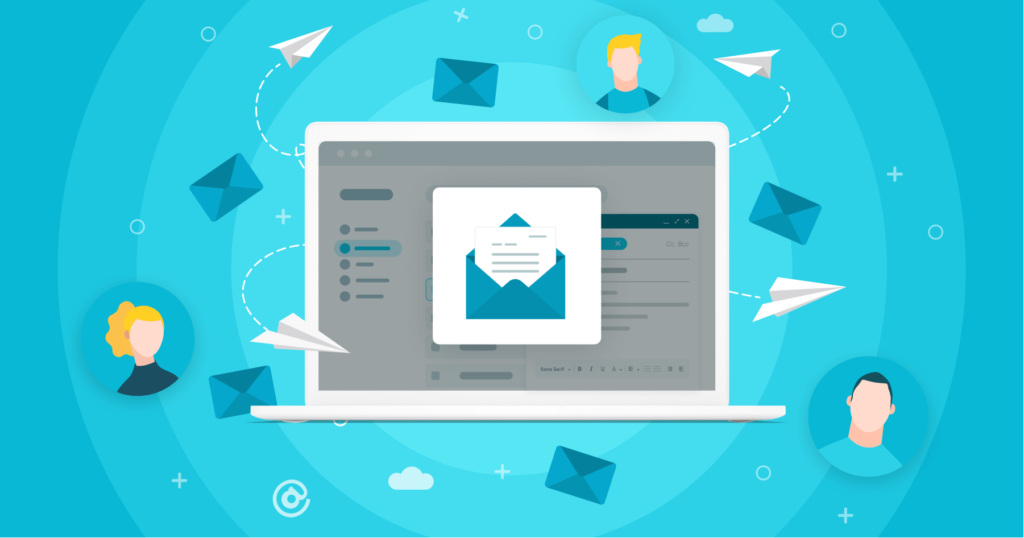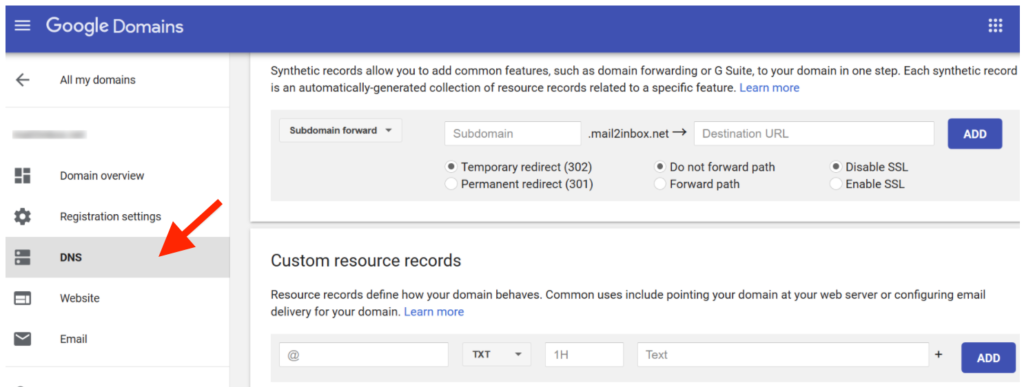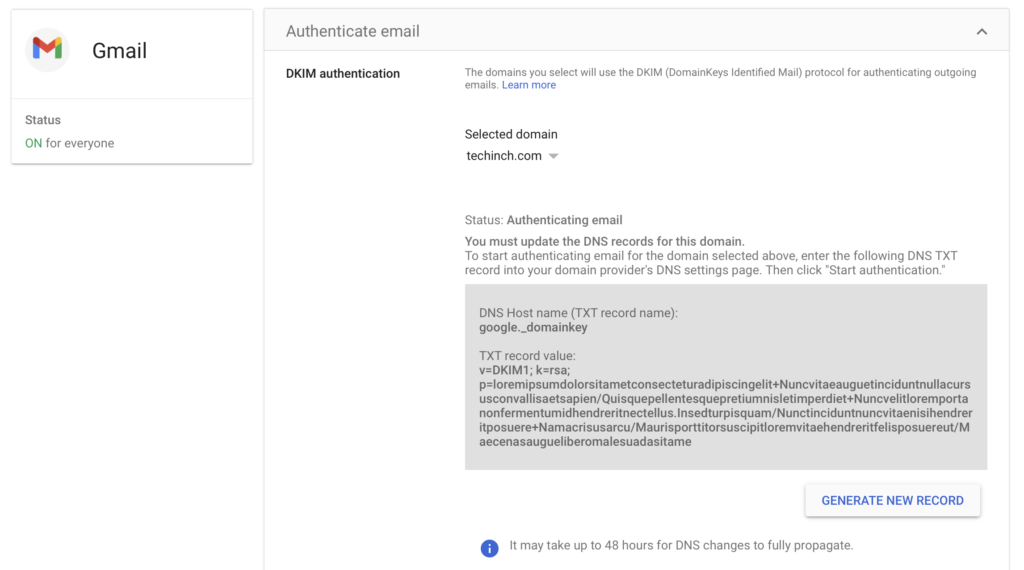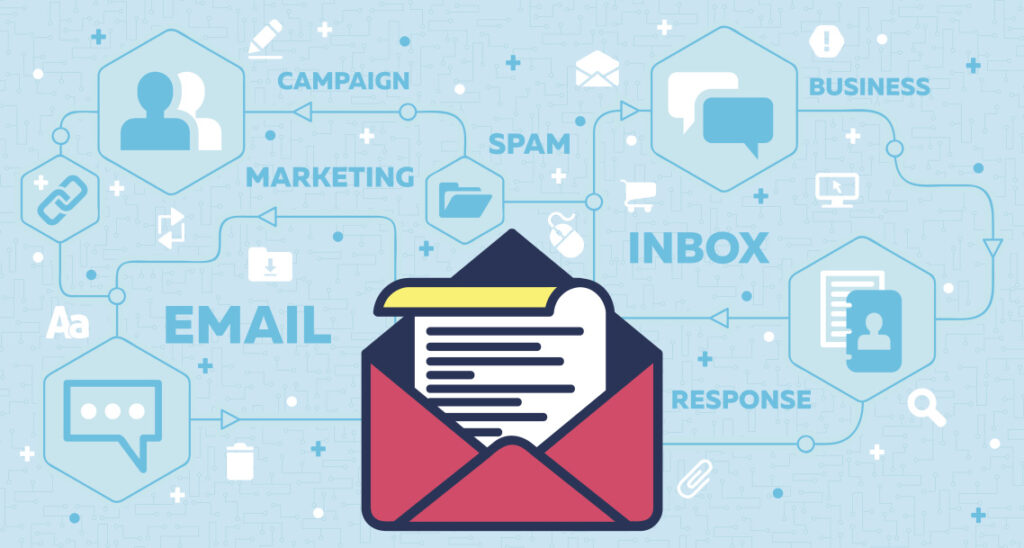Table of Contents
What is cold emailing?

Sending unsolicited emails to people or companies you have not previously interacted with is known as cold emailing. It is frequently utilized for networking, sales, marketing, and job searching.
If you have not read the previous article, I recommend you do so in order to better understand the steps that follow. In that article, we learned how to link our domain website that we purchased from Hostinger to our Google workspace.
You can buy the domain from the give link below:
Hostinger: https://www.hostg.xyz/SHEUk
Let’s start and see how to connect SPF, DMARC, and DKIM Records to our Google console.
Step 1, SPF RECORDS
• Type: TXT
• Host: @
• Value: v=spfi include:_spf.google.com -all
• TTL: 1 hour or 3600 seconds
Next add Record
* Follow the same steps with every domain you bought.

Step 2, DMARC RECORDS
• Type: TXT
• Host: Idmarc.solarmora.com
Note: Put your domain name after ( . ) Full stop
• Value: v-DMARC1:p-none;ruamailto:dmarc-reports@solarmora.com
Note: Put your domain name after @
• TTL: 14400
Next add Record
* Follow the same steps with every domain you bought.
Step 3, DKIM RECORDS

1. Sign in to your Google Admin console.
2. In the Admin console, go to Menu Gmail.
Apps Google Workspace
3. Click Authenticate email.
4. In the Selected domain menu, select the domain where you want to set up DKIM
5. Click the Generate New Record button.
6. In the Generate new record box, select your DKIM key settings:
• Type: TXT
• Name: Copy the given name from the workspace.
• Value: Copy the give value
• TTL: No change
* Finally click add record
What are the benefits of outreaching through cold emails?

Cold emailing offers several benefits:
1. Targeted Outreach: You can choose to focus on people or companies that you think would profit from your offer of goods or services. This makes it possible to take a more targeted approach than with conventional advertising techniques.
2. Cost-Effective: Cold emailing is typically an inexpensive way to connect with possible partners or customers. Due to its low financial requirements, it is available to companies of all sizes, including startups and small enterprises.
3. Scalability: Depending on your requirements, cold emailing can be scaled up or down. The procedure can be readily modified to meet your outreach objectives, regardless of how many prospects you are aiming to reach out to.
4. Measurable Outcomes: The majority of cold emailing platforms come with tracking and analytics tools that let you gauge how successful your campaigns are. Metrics like open rates, click-through rates, and conversion rates can be monitored to help you gradually improve your outreach plan.
5. Personalization: You can still add some personality to your emails even though cold emailing entails contacting strangers. The possibility of engagement can be raised by addressing recipients by name, making references to their business or sector, and customizing your message to meet their particular requirements.
6. Global Reach: Regardless of location, cold emailing gives you the ability to connect with possible partners or clients worldwide. This creates chances for your company to grow globally or establish connections with niche markets that might be challenging to reach in other ways.
7. Relationship Building: Cold emailing can be a good place to start if you want to gradually develop a relationship with a prospect, even though the first contact may be cold. Following up frequently and having meaningful conversations with leads can help nurture them and eventually turn them into collaborators or customers.
8. Feedback and Insights: Interacting with recipients via cold emails can yield insightful feedback about their preferences, needs, and pain points. Utilizing this data will help you better target your audience with your offerings, enhance your messaging, and enhance your products or services.
All things considered, cold emailing can be a successful tactic for companies trying to increase leads, widen their network, and promote partnerships or sales. But it is imperative that you approach it professionally, with consideration for the recipients’ time, and with an emphasis on adding value.

Conclusion
In summary, cold emailing provides businesses with an affordable and scalable way to conduct targeted outreach, allowing them to connect with prospective customers or partners worldwide.
Cold emailing can be a useful technique for creating leads, growing networks, and fostering partnerships or sales because of its quantifiable outcomes, personalization options, and relationship-building potential.
When done right, cold emailing can provide substantial advantages for companies of all sizes, assisting them in expanding and prospering in the cutthroat business world of today. However, it does require careful planning and execution to be effective.
FAQs (frequently asked questions)
1. Question: How can I improve the open rates of my cold email campaigns?
Answer: To improve open rates, focus on crafting compelling subject lines that are concise, personalized, and arouse curiosity. A/B testing different subject lines can also help identify what resonates best with your audience.
2. Question: What should I include in the body of my cold emails to increase engagement?
Answer: In the body of your cold emails, provide value to the recipient by addressing their pain points or needs, offering a solution, and showcasing the benefits of your product or service. Keep the message concise, clear, and focused on the recipient’s interests.
3. Question: How often should I follow up on a cold email if I don’t receive a response?
Answer: Follow-up frequency can vary depending on the context, but a general rule of thumb is to follow up 2-3 times at spaced intervals of 3-7 days. Be polite, respectful, and persistent in your follow-ups, but also be mindful not to spam or overwhelm the recipient.
4. Question: What metrics should I track to measure the effectiveness of my cold email campaigns?
Answer: Key metrics to track include open rates, click-through rates, response rates, and conversion rates. Analyzing these metrics can provide insights into the performance of your campaigns and help identify areas for improvement.
5. Question: How can I ensure compliance with email marketing regulations when sending cold emails?
Answer: Ensure compliance with regulations such as the CAN-SPAM Act by including a clear and conspicuous unsubscribe link in your emails, providing accurate sender information, and refraining from using misleading or deceptive subject lines or content. Additionally, always obtain consent before adding recipients to your email list.


